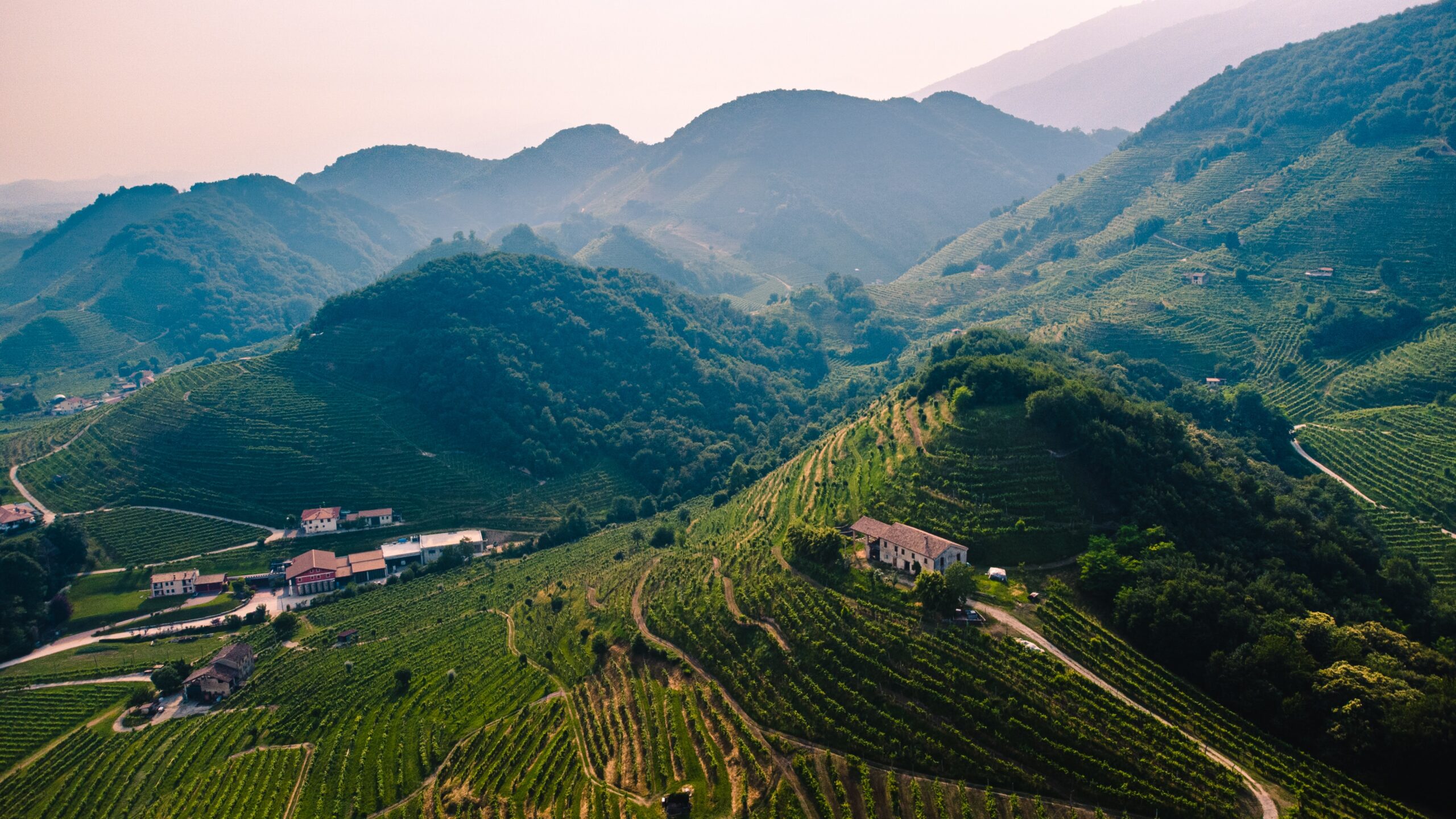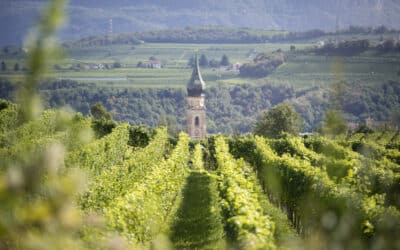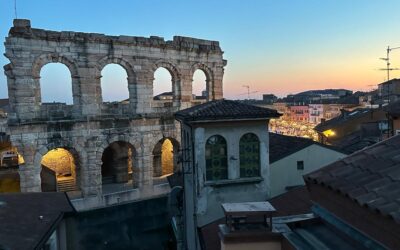Le Contesse, a leader of Prosecco, came to life in 1976 at the hands of Loris Bonotto and his wife, Luigina. Yet the property’s history dates back many decades earlier. The Bonotto’s ancestors had owned parcels of land that included a small piece once owned by the renowned Tiepolo sisters of Venice from which Le Contesse takes its meaning – “the countesses.”
Like many businesses when they first begin, Le Contesse started small. Loris and Luigina did everything to create their dream with passion and determination while at the same time starting a family. They always held steadfast to their vision – to make the best wine locally that they could then exportto other countries. They wanted families all over the world to enjoy their craft. sbecame a reality. And in an effort to converse and understand the foreign market, Loris immersed himself in language classes to hone his ability to speak English. Today Le Contesse’s Proseccos are enjoyed in many countries, including Europe, the United States and Japan.
Le Contesse is located within Veneto’s Treviso area, specifically the town of Vazzola. It sits less than one hour north of Venice and less than one hour south of the famed DOCG Prosecco area Conegliano. Treviso is often overshadowed by its iconic neighbor Venice. Yet this walled city has great history and is renowned for being the original area of Prosecco production. While Veneto is smaller in size than some of Italy’s other wine regions, it produces more wine than most of them.

Prosecco Production
Prosecco is made from the Glera grape, which is quite delicate because of its thin skins. Therefore, producers take great care when harvesting, sorting and pressing. The Prosecco DOC comprises nine different provinces including Treviso where Le Contesse calls home. With its expertise in the making of Prosecco DOC, Le Contesse focuses on two selections – Prosecco DOC and Prosecco Rosé DOC. The family makes its Prosecco in a single fermentation. This is different than most Prosecco production that focuses on a double fermentation – first in tank and then the secondary fermentation in stainless steel pressurized vats. The wine when ready goes into bottle. This original method of Prosecco production is called the Charmat method. It is different than Champagne production, which is made in the classic method, referred to as Methode Champenoise.
With the single fermentation method, the wine goes directly into a pressurized tank for fermentation and then after into bottle. The Bonotto family focuses on this method to reduce a step and prevent potential oxidation of the wine. Thus, the wine maintains its beautiful freshness and vibrant acidity.
Le Contesse Prosecco & Rosé Prosecco
Le Contesse Single Fermentation Prosecco Brut DOC is made from 100% Glera from within the Treviso DOC. Teh team harvests in September, and then presses the grapes gently before the wine goes into the stainless pressurized vats, with the addition of yeast for fermentation. The team then transfers the wine into bottle where it rests aging for a few weeks.
Le Contesse makes the Single Fermentation Prosecco Rosé DOC in the same way as the Prosecco Brut DOC. However, they use 100% Pinot Noir to make the rosé which they harves in late August-September.
Prosecco is a great partner for many cuisines. It naturally pairs well with Italian dishes including simple cheese and meat boards. It arries well with summer cuisine, like shellfish – oysters and clams – grilled shrimp and fish like Cod and Sea Bass. Due to its fruit forward nature, Prosecco works nicely with Asian cuisine.
Today, Le Contesse has more than 400 acres of land, with more than 150 acres contributing to organic practices. The Bonotto’s son Davide and his wife Francesca are now at the helm, leading a team of more than 25. The family’s goal is to continue following the organic path for the company.
Read the blog article on Lugana, the wine and region.

This article was written for Ethica Wines blog.





0 Comments